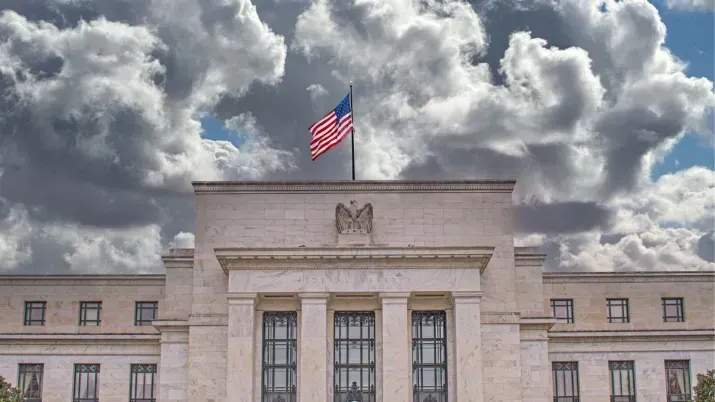Stakes are high but Fed in control as it ends QT
TwentyFour
In 2017, when the Federal Reserve (Fed) was preparing to shrink its balance sheet, then-chair Janet Yellen famously described the process of quantitative tightening (QT) as being "like watching paint dry." In September 2019, when short term rates experienced their first major stress during the QT process (by way of surging overnight repo rates), it was clear the process would not be quite as boring as Yellen hoped and that withdrawing liquidity from the broader economy may not be as straightforward as injecting it.
With the Fed having announced it is ending QT altogether, shortly after signs of stress in the money markets in October, it is important to understand how the provision of liquidity by the Fed and the mechanism for controlling short term rates has changed in the years since central banks called time on the quantitative easing (QE) era.
Central bank reserves: financial market plumbing
Prior to the global financial crisis, the Fed managed monetary policy rates by operating a “scarce” reserve system. Reserves are essentially central bank money used to settle transactions between banks and the Fed. For example, if a JP Morgan (JPM) client transfers money to a Bank of America (BofA) account, JPM would see its deposits fall while BofA would rise. JPM would settle that transaction with BofA via a transfer of central bank reserves from JPM’s account at the Fed to BofA’s account at the Fed. If, at the end of the day, JPM needed more reserves than they had on hand to settle these transactions, it would borrow reserves in the interbank market. Citi, for example, might have excess reserves that day and would lend them to JPM at an “overnight” rate.
The Fed, as the only institution that can create reserves, made sure that the rate at which this transaction happened was close to its target Fed Funds rate by managing the supply of reserves. If there were more borrowers than lenders on a given day, the Fed would create reserves by conducting Open Market Operations, i.e. by buying or selling government securities in the open market to adjust the level of reserves in the banking system (the Fed could also lend reserves directly through its discount window, but this was a secondary method). These operations prevented the FFR from deviating too much from their target. This system involved a minimum amount of central bank reserves in the system and therefore the fact they did not earn any interest was not a major issue for banks.
How QE changed the reserve system
Post-QE, central banks moved to a so-called abundant reserve system. In the US, QE is achieved by the Fed buying assets (mostly US Treasuries but also mortgage-backed securities) from the public through commercial banks. The Fed pays commercial banks for their assets by creating reserves. Given the scale of the QE efforts, banks’ balance sheets accumulated vast amounts of reserves as they sold vast amounts of USTs and MBS to the Fed. If these reserves were not remunerated, banks would have a significant portion of their balance sheet generating zero interest. The Fed, therefore, changed this and reserves are now remunerated at the Interest on Reserve Balances (IORB), which currently stands at 3.9%. In this environment, the IORB became the main tool for implementing Fed policy as it effectively sets the floor for monetary policy rates.
The abundant reserve system allows effective policy transmission only to the extent that the amount of central bank reserves remains…abundant. Just as QE involves the creation of reserves by the Fed, QT involves the Fed reducing the volume of reserves in the system by either selling assets (banks buy bonds from the Fed, depleting their reserves) or letting them mature without reinvesting. The precise definition of what exactly is an “abundant” level of reserves is unclear, but what is clear is that when we reach a level when too many reserves are eliminated from the system (through the QT process), there will be heightened competition for reserves in the money markets, which is reflected in higher money market rates. At that point perhaps it is more accurate to describe reserves as being “ample” rather than abundant. This was the spike in rates that occurred in September 2019 and led the Fed to pause QT at that time.
In response, and in preparation for future QT (which restarted in 2022), the Fed put in place its Standing Repo Facility (SRF). This facility allows commercial banks to borrow reserves in exchange for pledging collateral (USTs). This effectively works as a ceiling on short term rates, as banks have no incentive to pay extra for reserves outside the Fed facility. On the opposite end, there is the Overnight Reverse Repo Facility (ON RRP), which allows non-bank institutions such as money market funds to park excess cash with the Fed. If this didn’t exist, the enormous amounts of liquidity post-Covid would have pushed short term rates below the Fed’s target.
How “abundant” are reserves?
Spikes in SRF balances last month, with banks tapping the facility for $15bn over two days in mid-October and then $10bn in one day on October 29, were taken as evidence of stress in the money markets. At the same time, ON RRP balances (excess cash parked at the Fed by non-banks) have fallen to near zero (see Exhibit 1), suggesting that reserves may no longer be “abundant” and, as a result, repo rates have been a lot more volatile than usual.
The Fed is trying to engineer a situation where reserves stop falling just before they become scarce, but this is more art than science as there are several factors that influence demand for and the supply of liquidity. One of them is the Treasury General Account (TGA), which is the US Treasury’s account at the Fed. Recently, after the debt ceiling was lifted in July, the Treasury has been accumulating cash, which has the effect of draining reserves from the system. When the Treasury issues a UST, a primary dealer buys it and then sells it to the public. For settling the transaction with the Treasury, the primary dealer instructs a transfer of its reserves to the TGA. While the TGA has been building in recent months, the aggregated reserves of the banking system have fallen to post-Covid lows partly because of QT (see Exhibit 2).
Fed plumbing working as intended
For the Fed, and for investors, the stakes are certainly high. In September 2019, repo rates jumped some 300bp in a day, bringing about significant disruption to the plumbing of USD markets, which if left unaddressed could have caused major damage to the economy via higher rates and constrained lending, which would obviously have consequences for corporate bond markets too.
This time around, however, we think the Fed plumbing is working exactly as intended. We do not anticipate a repeat of the September 2019 strain on liquidity, nor a lasting strain on liquidity which would be disruptive to credit. This is not least because QT will be coming to an end soon, but also because the Fed has been much more vigilant around the adequate size of its balance sheet since the 2019 turmoil. As part of this, it has put in place adequate facilities to manage short term rates.
While we remain vigilant as there are implementation risks with any large untested transition – such as that from an abundant to an only “ample” reserve framework – we take comfort in the experience of 2019 and the mechanisms put in place to mitigate against a repeat of the episode.



